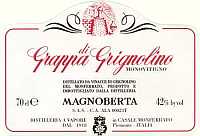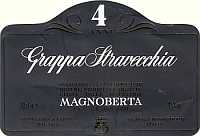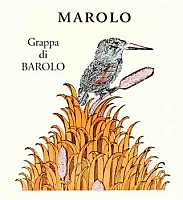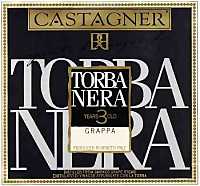
Wine Culture and Information since 2002 - Volume 22
 Wine Culture and Information since 2002 - Volume 22 |
|
PepperSpice par excellence, the aroma of pepper is the one which has mainly influenced the course of history and the economies of whole nations and still today is the king of the cooking of the world |
|
Since ancient times spices have made the fortune of many people, of cities and whole families of merchants. Spices have contributed to make the nutrition of many people less monotonous and have become part of the worldwide culinary tradition. The hot spice known as “pepper” is obtained by the homonymous tree (Piper). The tree of pepper - or better to say, the trees of pepper - are tropical plants from which is obtained black pepper, white pepper and long pepper. Leaves are used in the eastern world as a food to be chewed together with the other components making betel. Moreover, there are two other varieties - Piper Methysticum and Piper Excelsum - used by some people in Polynesia for the production of a narcotic beverage called kava-kava. The pepper tree has a woody trunk, perennial creeping and that can reach 4 or 5 meter in height (13-16 feet), belongs to the Piperaceae family originating from the tropical forests of monsoon Asia. It prefers a humid climate, soil rich in mineral and organic substances, has deep green colored heart shaped leaves and berries grouped in green clusters which, when ripe, get an intense red orange color. Today the pepper tree is cultivated in almost every tropical country having an appropriate climate, and in particular India - currently the main producer - Malaysia, Madagascar, Brazil, Indonesia, Cambodia and Ceylon. The pepper tree likes semi shadowed places and it is usually cultivated by taking advantage of the shadow of coffee plantings.
|
|
Information about pepper are found in ancient Indian Brahman documents as a cure for urinary diseases and jaundice. Thousands years ago, pepper was included in the ingredients of ayurvedic medicine, together with other three herbs called Trikatu in Sanskrit language, meaning “the three hot drugs”. Pepper is a spice which made the fortune of many merchants. It was introduced in Europe by caravaners since the times of ancient Roman and Greeks during the first century before Christ, becoming very popular and successful. The culinary recipes of those times required the use of many spices for the preparation of dishes, purposely made in an elaborated way. At Romans times, pepper was considered among legendary tropical spices. In Pliny the Elder's Naturalis Historia, the origin of pepper was believed to be from India to Caucasus, although a certain confusion among the many varieties is evident.
Around 92 AD, Romans built deposits destined to the preservation of pepper called horrea pipearia, that is “pepper barn”. Since those times pepper was falsified with ground juniper berries, and sometimes lead salts were added in order to increase weight. For centuries the trading of pepper was controlled by Arabs, and after the fall of Byzantine empire, Marine Republics - and in particular Venice - took the control of pepper trading, becoming the main agent for the distribution of all the known spices in Europe. Pepper was the main source of profits for Venice and Genoa. The economic importance and relevance of pepper was such that in some periods its value was even higher than gold. Romans appreciated its use in cooking very much and they considered pepper so precious as to be given as a gift to important people. Among the many legends of the Middle Age, there was one about pepper: it was believed its brown color was because the method with which was harvested. According to this legend, cultivators were forced to use fire in order to expel serpents which infested pepper cultivations, therefore burning the berries which in turn got their characteristic shape and color. Pepper has been a spice reserved to the tables of rich people, both appreciated for the exotic taste it was capable to give to daily foods, as well as for the image of exclusivity and rarity, a real status symbol of those times. In England, in 1180, in order to better control the trade of pepper in the whole nation, was founded in London the “Corporation of pepper merchants”. The craving for the conquest of pepper trade was the main cause for which has been searched a sea way to the eastern world. The Portuguese Vasco de Gama was successful in reaching Indies by circumnavigating the African continent, therefore finding an alternative way to the classic “land way”, probably the same used for silk. Despite this, the Venetian dominion was slightly affected by the new competition: in fact pepper grains could not stand the long staying in the humid holds of ships during the stressful oceanic journeys. In the seventeenth and eighteenth century, French cooking began to appreciate simplicity and to favor the natural taste of foods: this was the cause for a lower request of spices - and therefore of their consumption - including pepper. Recently, because of the spreading of multi ethnic societies, as well as the spreading and the interest for culinary traditions different from one's own, pepper is living a new flourishing era, as well as other spices. Italian cooking, for example, is revaluating pepper and it even uses the grains for the decoration of some dishes.
|
||||||||
|
Pepper represents a quarter of all the spices commercialized in the world, about 130,000 tons every years. Contrary to common belief, pepper was not used in the past as a preserving ingredient: indeed were used other methods for the preservation of foods and during the preparation of recipes pepper was always added nearly at the end of cooking. The hot sensation which is perceived in the mouth during the swallowing of pepper, is caused by an alkaloid called piperine. The real pink pepper exists in the countries of origin only as it is rarely exported. What we find in our tables is not real “pepper”, it is a plant from South America, whose scientific name is Schinus Terebenthifolius, and - although it has a pleasing taste - the berries are slightly toxic in case they are consumed in relevant quantities. Black Pepper is produced by harvesting the berries - in the period they are not yet ripe - from the Piper Nigrum tree, are then allowed to ferment for some days under the sun (generally, from seven to ten days), until they get the characteristic black-brown color, then are left to dry. A mushroom present in the berries is the responsible for the characteristic dark color. Black pepper is commercialized both in grains and ground. White Pepper is obtained by the same plant of black pepper and it is prepared by allowing the berries to completely ripe - that is until they get a red color - they are then plunged in water and rubbed in order to remove the skin. White pepper is considered more valuable, with a more delicate taste and it is less aromatic than black pepper, best suited for the preparation of sauces or added to fish and white meat recipes. It is commercialized both in grains and ground. Sometimes, white pepper is obtained by removing the external skin from black pepper: of course the final product is not real white pepper, it simply is decorticated black pepper. White pepper and decorticated black pepper are used in preparations in which it is advised to avoid the typical black stains, not very pleasing to see. Long Pepper is made from small and long berries, with a delicate hot and basically sweet taste. Used in Europe in the past, it is now mainly cultivated and used in India, far East and the countries of the Pacific area. Sometimes this pepper can be listed in the ingredients of curry or in Indian pickles and called pipel. Green Pepper is made from green berries, usually preserved in pickle and even mashed. Its taste is delicate and not very hot, suited for the preparation of fish and delicate dishes of meat. Mignonette Pepper is a blend of white and black grains grossly ground and in fine powder, very appreciated and used in France. Today pepper is found everywhere, although frequently having a pretty ordinary quality. Even nowadays, good quality pepper is expensive - just like other products - however, if we consider the frequency we use it daily, it is worth paying more attention and to look for a high quality pepper. It is always advisable to avoid the purchase of ground pepper, both because it can be easily adulterated - in low quality ground pepper are sometimes added date powder and other lower quality spices - and as soon as it is ground, it quickly loses its organoleptic qualities. Pepper must be purchased in grains and milled the very moment it is being used by means of a pepper mill. It is not a matter of exactness: the difference is truly remarkable. The most precious varieties are Indian Tellicherry and a type coming from Sarauak. Pepper is always kept in grains - even commercially - because as soon as it is ground, it quickly looses its fragrance and its aromas. It is not always easy to recognize the many qualities of pepper: most of the times in the packages found in shops is never mentioned neither the quality nor the origin. In order to recognize the quality it is good to consider that: the best quality pepper is - almost always and almost everywhere - among the most expensive ones; pepper should be homogeneous in size and color, hard enough in order not to be broken when squeezed with nails; having no mold or dust. Pepper grains can be kept for a very long period of time, therefore - when a good quality pepper is found - it is advisable to buy a good quantity: it will be enough to keep it in a glass jar. It is however advisable to use pepper grains only, ground with a mill exclusively used for this purpose, as the main secret to enjoy all the organoleptic qualities of pepper, is to mill it the very moment of use and to add it to foods nearly at the end of cooking.
|
||||
AquavitaeReview of Grappa, Distillates and Brandy |
|
|
| Distillates are rated according to DiWineTaste's evaluation method. Please see score legend in the "Wines of the Month" section. |

|
|
Grappa Bianca |
|
| Carpenè Malvolti (Italy) | |
| Raw matter: Pomace of white grapes | |
| Price: € 9.00 - 70cl | Score: |
| This grappa is colorless, limpid and crystalline. The nose denotes intense, clean and pleasing aromas of pear, banana, apple, peach and wistaria, with almost imperceptible alcohol pungency. The mouth is intense with perceptible alcohol pungency which tends to dissolve rapidly, good correspondence to the nose, good roundness and pleasing sweet hint. The finish is persistent with flavors of pear and peach, slight sweet hint. This grappa is produced with discontinuous steam operated alembic still. Alcohol 40%. | |

|
|
Grappa di Grignolino |
|
| Distilleria Magnoberta (Italy) | |
| Raw matter: Pomace of Grignolino | |
| Price: € 15.00 - 70cl | Score: |
| This grappa is colorless, limpid and crystalline. The nose reveals intense, clean and pleasing aromas of apple, hazelnut, raspberry, cherry and almond, with almost imperceptible alcohol pungency. The mouth is intense with perceptible alcohol pungency which tends to dissolve rapidly, good correspondence to the nose, agreeable sweet hint. The finish is persistent with flavors of raspberry, apple and almond. This grappa is produced with discontinuous distillation at very low steam pressure. Alcohol 42%. | |

|
|
Grappa Stravecchia 4 Anni |
|
| Distilleria Magnoberta (Italy) | |
| Raw matter: Pomace of Barbera, Grignolino and Freisa | |
| Price: € 15.80 - 70cl | Score: |
| This grappa shows a pale amber yellow color, limpid and crystalline. The nose denotes intense, clean and pleasing aromas of hazelnut, licorice, vanilla, prune, black cherry and chocolate, with almost imperceptible alcohol pungency. The mouth is intense with perceptible alcohol pungency which tends to dissolve rapidly, good correspondence to the nose, pleasing roundness, balanced sweet hint. The finish is persistent with flavors of licorice, hazelnut and prune. This grappa ages for 4 years in cask and it is produced with discontinuous distillation at very low steam pressure. Alcohol 45%. | |

|
|
Grappa di Moscato di Canelli 2002 |
|
| Casa Luparia (Italy) | |
| Raw matter: Pomace of Moscato from Canelli | |
| Price: € 17.00 - 50cl | Score: |
| The grappa is colorless, limpid and crystalline. The nose denotes intense, clean, pleasing and refined aromas of grape, peach, banana, pear, candied fruit, orange, sage, white rose and apple with almost imperceptible alcohol pungency. The mouth is intense with perceptible alcohol pungency which tends to dissolve rapidly, good correspondence to the nose, agreeable and balanced sweet hints, good roundness. The finish is very persistent with flavors of grape, peach and banana. A well made grappa produced with discontinuous distillation at very low steam pressure. Alcohol 42%. | |

|
|
Grappa di Barolo 2001 |
|
| Distilleria Santa Teresa Marolo (Italy) | |
| Raw matter: Pomace of Barolo's Nebbiolo | |
| Price: € 30.00 - 70cl | Score: |
| This grappa shows a brilliant amber yellow color, limpid and crystalline. The nose denotes intense, clean, pleasing and refined aromas of vanilla, licorice, prune, leather, honey, cocoa, violet, hazelnut and raspberry, with almost imperceptible alcohol pungency. The mouth is intense with perceptible alcohol pungency which tends to dissolve rapidly, pleasing smoothness, good and balanced sweet hint, agreeable. The finish is persistent with flavors of hazelnut, licorice and prune. A well made grappa distilled in bainmarie discontinuous alembic still. It ages for 4 years in oak and acacia casks. Alcohol 50%. | |

|
|
Torba Nera |
|
| Castagner (Italy) | |
| Raw matter: Pomace of Merlot, Cabernet Sauvignon, Pinot Noir and Prosecco | |
| Price: € 32.90 - 70cl | Score: |
| This grappa shows an intense amber yellow color, limpid and crystalline. The nose reveals good personality with intense, clean, pleasing and refined aromas of smoked, leather, vanilla, tobacco, licorice, chocolate, coffee, honey and hazelnut, with imperceptible alcohol pungency. The mouth is intense with perceptible although not intrusive alcohol pungency which tends to dissolve rapidly, good correspondence to the nose, pleasing smoothness, balanced sweet hint, agreeable. The finish is very persistent with long flavors of chocolate, licorice, hazelnut and coffee. A well made grappa distilled with continuous and discontinuous alembic stills and aged for 6 months in cherry wood casks and for 2 years and a half in barrique. The pomace is smoked before being distilled. Alcohol 41%. | |
Wine Parade |
|
|
| The best 15 wines according to DiWineTaste's readers. To express your best three wines send us an E-mail or fill in the form available at our WEB site. |
| Rank | Wine, Producer | |
|---|---|---|
| 1 |
| Palazzo della Torre 2000, Allegrini (Italy) |
| 2 |
| Chablis Grand Cru Les Clos 2002, Domaine Billaud-Simon (France) |
| 3 |
| Montepulciano d'Abruzzo Riparosso 2001, Illuminati (Italy) |
| 4 |
| Harmonium 2001, Firriato (Italy) |
| 5 |
| Riesling Cuvée Frédéric Emile 1999, Maison Trimbach (France) |
| 6 |
| Edizione Cinque Autoctoni 2001, Farnese (Italy) |
| 7 |
| Aglianico del Vulture La Firma 2002, Cantine del Notaio (Italy) |
| 8 |
| Amarone della Valpolicella Classico 1998, Santa Sofia (Italy) |
| 9 |
| Trento Talento Brut Riserva Methius 1998, Dorigati (Italy) |
| 10 |
| Riesling Spätlese Nierstein Brudersberg 2003, Weingut Freiherr Heyl Herrnsheim (Germany) |
| 11 |
| Jerez Fino Tio Pepe, Gonzalez Byass (Spain) |
| 12 |
| Colli Orientali del Friuli Rosazzo Bianco Terre Alte 2002, Livio Felluga (Italy) |
| 13 |
| Riesling Central Otago 2004, Felton Road (New Zealand) |
| 14 |
| Montepulciano d'Abruzzo Villa Gemma 1999, Masciarelli (Italy) |
| 15 |
| Brunello di Montalcino 1999, Castello Banfi (Italy) |
|
||||||||
|
DiWineTaste Polls
|
| |||||||
Privacy Policy | |||||||


| Copyright © 2002-2024 Antonello Biancalana, DiWineTaste - All rights reserved |
| All rights reserved under international copyright conventions. No part of this publication and of this WEB site may be
reproduced or utilized in any form or by any means, electronic or mechanical, without permission in writing from DiWineTaste. |